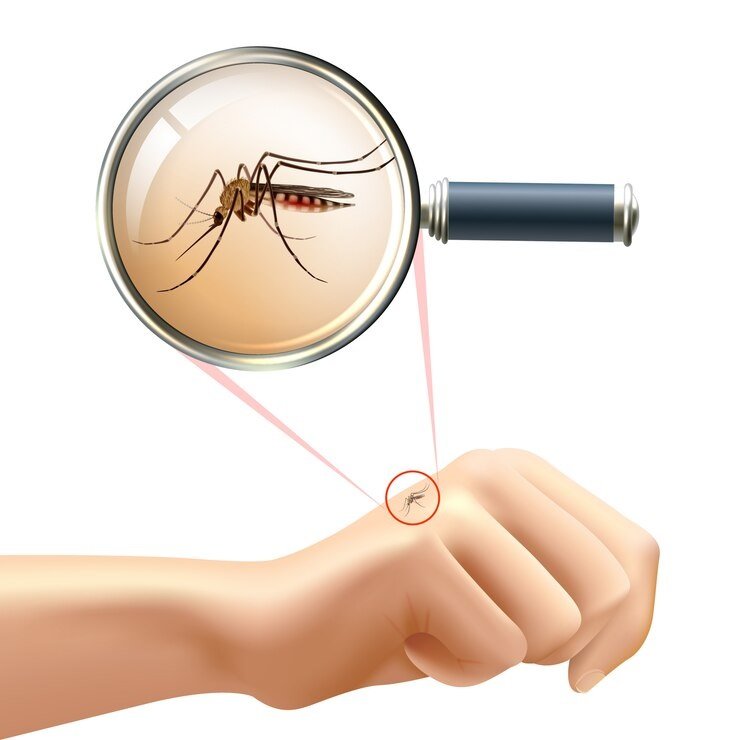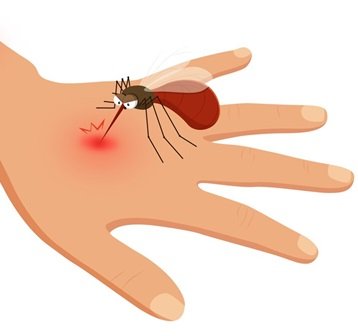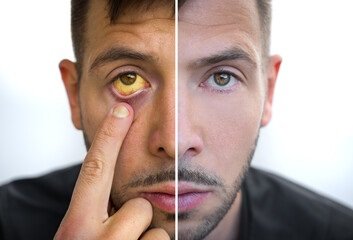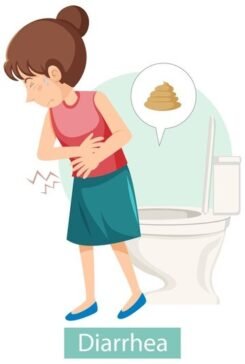Dengue

Dengue virus is spread by the bite of infected female Aedes mosquito. Symptoms appear within 4 to 10 days after the bite. Its symptoms are extreme pain in the stomach, pain in the joints of the body, appearance of small red wounds, nausea or vomiting, severe headache, bleeding from gums or nose, red urine, black stool etc. There is also a possibility of internal bleeding in the body of a dengue infected person.
Blood test is mandatory to detect dengue, hence if such symptoms appear, regular blood test should be done on the advice of the doctor. The infected person feels extreme pain and feels that it would be better if they took a medicine that would reduce the pain. Some patients take strong painkillers without doctor’s advice. Which can be life threatening. Strong medicines cause more bleeding in the body. Therefore, apart from paracetamol, no other medicine should be taken without doctor’s advice.
The infected person should take adequate rest, light and nutritious food. Ways to avoid this infection are wearing long-sleeved clothes, setting up a hammock to avoid mosquito bites, cleaning water holes around the house and using insecticides to kill mosquito larvae in stagnant water.
Malaria

Malaria, a mosquito-borne infectious disease caused by Plasmodium parasites, continues to be a significant public health concern, particularly in tropical and subtropical regions. The disease is transmitted to humans through the bite of infected female Anopheles mosquitoes, which inject the parasites into the bloodstream, leading to a range of symptoms and potentially life-threatening complications.
Symptoms of malaria typically include fever, chills, headache, muscle aches, and fatigue. If left untreated, malaria can progress rapidly, causing severe complications such as organ failure, severe anemia, and cerebral malaria, which can result in coma or death, particularly in young children and pregnant women.
Preventive measures against malaria include the use of insecticide-treated bed nets, indoor residual spraying to control mosquito populations, and chemoprophylaxis for travelers visiting endemic areas. Prompt diagnosis and effective treatment with antimalarial medications are essential for managing the disease and preventing its spread.
Despite significant progress in malaria control efforts over the years, challenges such as insecticide resistance, inadequate access to healthcare services, and socio-economic factors continue to impede eradication efforts. Innovative approaches, including the development of new antimalarial drugs and vaccines, alongside strengthened healthcare systems and community engagement, are crucial for achieving the goal of malaria elimination.
Jaundice and Hepatitis A/E

Jaundice, a condition characterized by yellowing of the skin and eyes, can be caused by various underlying factors, including hepatitis A and E viruses. Hepatitis A and E are two types of viral infections that primarily affect the liver, leading to inflammation and dysfunction.
Hepatitis A is typically transmitted through the ingestion of contaminated food or water, or through close contact with an infected individual. Symptoms of hepatitis A may include jaundice, fatigue, abdominal pain, nausea, and fever. While most cases of hepatitis A resolve on their own without treatment, in severe cases, hospitalization may be necessary.
Hepatitis E, on the other hand, is primarily transmitted through the consumption of contaminated water or undercooked meat, particularly in areas with poor sanitation. Similar to hepatitis A, symptoms of hepatitis E include jaundice, fatigue, abdominal pain, and nausea. In most cases, hepatitis E resolves on its own without specific treatment, although pregnant women and individuals with pre-existing liver disease may be at higher risk of complications.
Both hepatitis A and E viruses pose significant public health challenges, particularly in regions with inadequate sanitation and hygiene practices. Vaccination against hepatitis A is available and is recommended for individuals traveling to high-risk areas or engaging in activities that may increase their risk of exposure. Prevention of hepatitis E primarily involves ensuring access to safe drinking water and practicing good hygiene.
Typhoid

There is also a possibility of typhoid in this season. This is also a disease that can be caused by contaminated water and food. Salmonella Typhi and Para Typhi bacteria cause this disease. Its initial symptom is fever. In the beginning, symptoms like high fever, stomach ache, diarrhea, weakness in the body, cough, loss of interest in food and pink rash on the body are seen. If it is not treated on time, bleeding may occur due to perforation of the intestines. Therefore, it should be diagnosed in time. Its treatment method is antibiotics. Therefore, you should go to the hospital on time and take medicine as per the doctor’s advice. To avoid this, you should pay attention to your eating habits. Boil water and eat well cooked food, go to the hospital without worrying about fever.
Scrub Typhus
Scrub typhus, also known as bush typhus, is a bacterial disease caused by Orientia tsutsugamushi. While it may not be as widely recognized as some other infectious diseases, it poses a significant health risk in certain regions, particularly rural areas of Asia and the Pacific Islands.
Transmission and Symptoms
The disease is typically transmitted to humans through the bite of infected chiggers, which are tiny mites found in areas with heavy vegetation such as forests and grasslands. Scrub typhus can also spread through the handling of infected animals or their excreta. Once infected, symptoms usually appear within 10 days and may include fever, headache, muscle pain, cough, and gastrointestinal disturbances.
Diagnostic Challenges
One of the challenges in diagnosing scrub typhus lies in its nonspecific symptoms, which can mimic those of other common febrile illnesses such as dengue fever or influenza. Laboratory tests, including serological tests and molecular methods, are often required for accurate diagnosis.
Treatment and Prevention:
Fortunately, scrub typhus can be effectively treated with antibiotics such as doxycycline or azithromycin if detected early. However, untreated cases can lead to severe complications, including organ failure and even death. Prevention primarily involves avoiding exposure to chigger-infested areas, wearing protective clothing, and using insect repellents.
Global Impact
Although scrub typhus is endemic to specific regions, its impact extends beyond geographical boundaries due to factors such as travel and migration. Climate change and environmental degradation may also influence the distribution and prevalence of the disease, making it a pertinent issue for global health security.
Diarrhea

Diarrhea, characterized by frequent loose or watery stools, is a prevalent health issue affecting people of all ages worldwide, particularly in developing countries with limited access to clean water, sanitation, and healthcare services. While often considered a minor inconvenience, diarrhea can have severe consequences, especially in vulnerable populations such as young children and the elderly.
The most common causes of diarrhea are viral, bacterial, or parasitic infections, often transmitted through contaminated food or water, poor hygiene practices, or inadequate sanitation facilities. Other factors contributing to diarrhea include malnutrition, certain medications, and underlying health conditions such as inflammatory bowel disease or irritable bowel syndrome.
Preventive measures for diarrhea include access to safe drinking water, improved sanitation and hygiene practices, proper food handling and storage, and vaccination against specific pathogens such as rotavirus, a common cause of severe diarrhea in children. Oral rehydration therapy (ORT), consisting of a simple solution of salts and sugars, is highly effective in treating dehydration caused by diarrhea and can save countless lives when administered promptly.
While diarrhea is often self-limiting and resolves within a few days, seeking medical attention is crucial for severe cases, particularly in young children, the elderly, or individuals with compromised immune systems. In cases of persistent or bloody diarrhea, diagnostic tests may be necessary to identify the underlying cause and determine appropriate treatment.
Note:
If any member of your family is suffering from fever, take extra care in making arrangements that other members of your family are safe from mosquito bites. If you develop a fever after traveling to a tropical area, consult your doctor/physician so they can determine whether you have a fever or some other condition.







